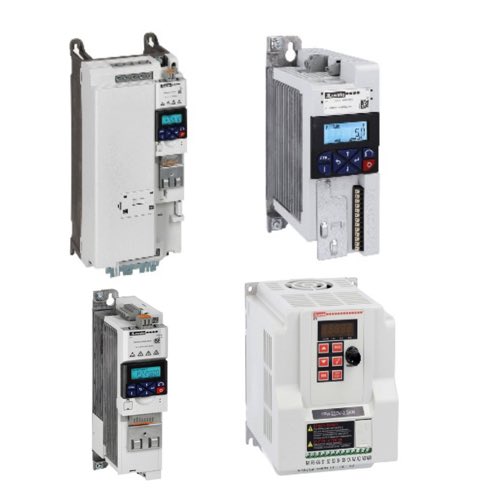
Lovato VFDs

Lovato variable frequency drives (VFDs) are sophisticated motor control devices that are highly adept at industrial and commercial applications. You find them deployed in many kinds of rotating machines, such as pumps, compressors, fans, and, of course, electric motors. They control the speed and torque of AC motors by adjusting the frequency and voltage of the drive's output to the motor. Beyond basic motor speed control, a Lovato VFD offers up to five different operational modes for tailoring whatever kind of rotating machine you have to what it's best at doing, with VFD Energy Savings being one of the most impressive features.
Lovato provides an extensive selection of variable frequency drive models to meet nearly every power range and application requirement. In addition to standard VFDs for general applications, they offer specialized versions for certain industries, such as HVAC, water treatment, and material handling. All of their VFDs are designed to a high-performance standard and are suitable for use in a wide and varied selection of industrial processes.
Products
More Information about Lovato VFDs
The Lovato VFDs are known for being simple to understand and straightforward to work with. The user interface is comprised of a built-in keyboard and display which allows access to setting parameters and is easy to use thanks to the extended texts describing the functions and codes. They do not require any space for side ventilation, allowing you to install several side-by-side drives.
FAQs
Are variable frequency drives the same as variable speed drives?
Yes, variable frequency drives (VFDs) and variable speed drives (VSDs) are essentially the same, both used to control the speed and torque of electric motors by adjusting the motor's input frequency and voltage.
Motor Starters, Soft Starters and VFDs
Motor Starters
Motor starters safely start and stop a motor in industrial applications. They are designed with a contactor, overload and circuit protection. They are used when basic motor control is required, where torque on the motor is not a concern and speed control is not needed. The advantages of motor starters include: lower cost, allows for remote operation, allows for monitoring of motor state (with the use of auxiliary contacts) and they are safe and efficient. The disadvantages include: high inrush current that can cause fuses to blow and breakers to trip if the inrush is too high, and the starter will allow a full torque to start the motor which can cause the motor to ramp up to full speed very quickly potentially causing the motor to wear and degrade prematurely.
Soft Starters
Soft starters protect motors from inrush current by gently ramping up the motor to full speed. They provide all of the same functions as a traditional motor starter. The advantages of soft starters include: they are less expensive than a VFD when only startup control is needed, they are a smaller system than a VFD where space is a concern and they prevent unwanted torque upon startup, prolonging the life of the motor. The disadvantages include: they are more expensive than a traditional motor starter and they do not allow for full speed control.
VFDs
A Variable Frequency Drive (VFD) allows for the slow ramp up of a motor during startup and the slowing down of the motor during shutdown. It also allows for full speed control during the entire run cycle of the motor. VFDs provide the same functions as both the traditional motor starters and soft starters. The advantages of VFDs include: full speed control (start, stop and in-between), more custom control and monitoring, energy savings due to efficient motor usage and less wear and tear on the motors. The disadvantages include: they are more expensive and larger than other motor control options and they generate heat that may require fans or AC units.

